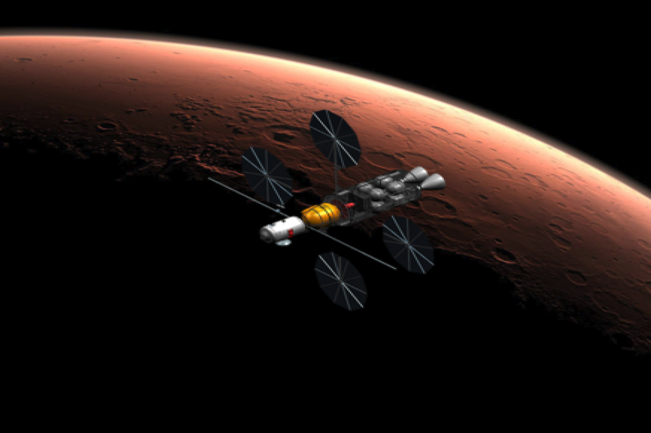Engineering team claims 1st place in International Spacecraft Design Competition

LAWRENCE — A team of students from the University of Kansas School of Engineering won the top spot in an international competition to design a spacecraft capable of orbiting Mars.
The KU entry, named “Pytheas,” marked the first time the university has won the undergraduate team space design competition sponsored by the American Institute of Aeronautics and Astronautics (AIAA). It was also the third first-place finish for KU in AIAA competition for the 2016-17 school year, a school record.
“It was a big deal for our graduating class,” said Bailey Miller, now a first-year graduate student in aerospace engineering, who captained the Pytheas design team.
Participants were challenged to design a spacecraft capable of traveling to and orbiting Mars without landing on the planet — much like Apollo 8 circumnavigated the moon in 1968 in preparation for the later Apollo 11 landing.
The KU team designed a craft with multiple components: One that featured a “hard” capsule with metal walls as well as a “soft” inflatable capsule; the International Space Station currently features both. Pytheas was designed to run on solar power, with a nuclear power backup and featured a stasis chamber to let astronauts sleep for up to two weeks at a time on the trip to Mars.
“It actually saves on supplies, consumables like food and water,” Miller said. “You don’t have to use as much if they’re not burning any food or calories.”
The Universidade De Lisboa from Portugal took second place in the competition; the University of Illinois at Urbana-Champaign finished third.
What set KU’s entry apart, Miller said, was a nontraditional decision: Rather than accept NASA’s projection for the trajectory needed to send such a craft to Mars, the Pytheas team re-examined the data. They realized the numbers from NASA were far too conservative, which meant the mission would actually require far more propellant than originally anticipated. Judges praised the KU students for their independent examination of the data and for making the necessary adjustments that other teams missed.
Designing Pytheas was a complex process that took the seven-person team — advised by Mark Ewing, associate professor of aerospace engineering — much of the school year to accomplish.
“Even to the last day before submission, we were making decisions about what the spacecraft would look like,” Miller said. “It was interesting to see the process come together, to see how complex it was.”
KU won two other AIAA competitions for the school year: The Graduate Team Aircraft Design Competition, as well as the Undergraduate Engine Design Competition. The university has a long history of victories in such competitions but had never before won three in the same cycle.
“The students and their faculty advisers work hard on these, and they’ve done very well in recent years,” said Rick Hale, who chairs the aerospace engineering program at KU. “We’re proud.”
Miller, meanwhile, plans to finish his postgraduate studies — and then take aim at Mars, for real this time.“Honestly, I want to go to Mars,” he said. “One hundred percent, I want to be an astronaut and go to Mars.”